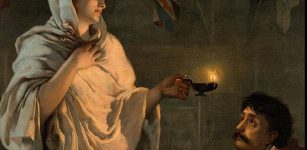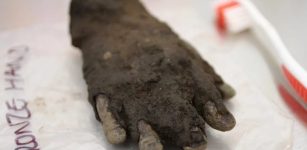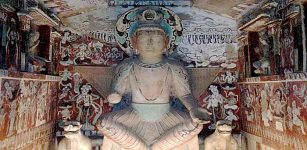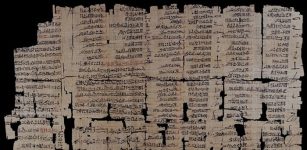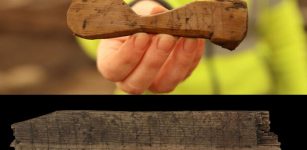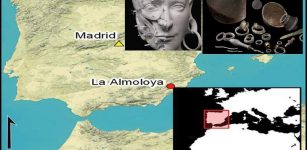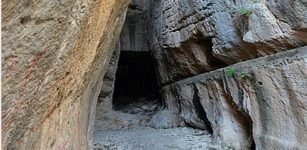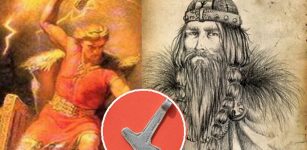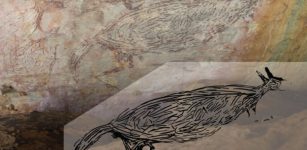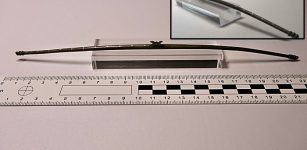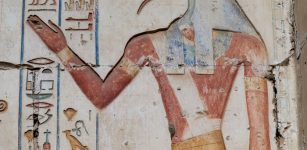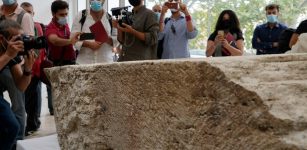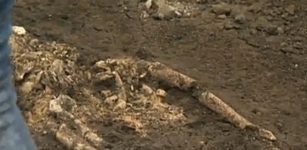Ancient Relief Depicting Heracles With His Crook And A Seven-Headed Snake Should Be Protected
AncientPages.com - An ancient relief depicting Heracles with a crook in his right hand and a seven-headed snake in his left hand can be found in an ancient quarry in the northwestern province of Bursa’s İznik district, Turkey.
Unfortunately, the right arm of a Heracles relief has suffered damage due to the agricultural industry in the area, according to cultural specialists. Also the statue's left arm of the relief was already broken when the object was discovered.
According to ancient Mesopotamian myths, there was a hybrid of serpent, lion and bird, sometimes identified with the seven-headed serpent slain by warrior-god Ninurta in the mythology of the Sumerian period.
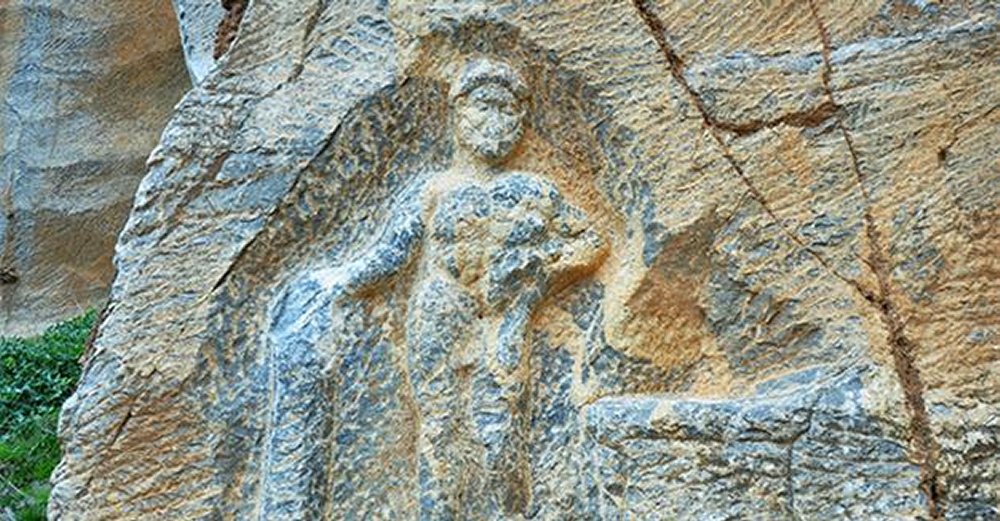
In the relief, Heracles has his crook in his right hand and a seven-headed snake in his left hand. It is one of the artifacts that should be taken under protection. Credits: DHA photo
In the mythological praise poem devoted to Ninurta and entitled "Ninurta's return to Nippur," the storm god describes one of his weapons as "the seven-mouthed muš-mah serpent", reminiscent of the the seven headed Lernaean Hydra and Heracles, who killed it, according to Greek myth.
This Hydra had many parallels in ancient Near Eastern religions.
The multi-headed serpent is often mentioned in mythology and there are many representations of gods battling seven-headed serpents, have been discovered in Northern Syria, Mesopotamia and Anatolia from 1600 to 1500 B.C.
 Gustave Moreau's 19th-century depiction of the Hydra, influenced by the Beast from the Book of Revelation. credits: wikipedia
Gustave Moreau's 19th-century depiction of the Hydra, influenced by the Beast from the Book of Revelation. credits: wikipedia
The area of the human-size Heracles relief, which is carved into a rock in the Deliklitaş area, eight kilometers from İznik, was declared a protected area by the Council of Monuments in 1990, after the relief was found.
However, salty and chemical waste from olive processing in the area are now damaging the relief.
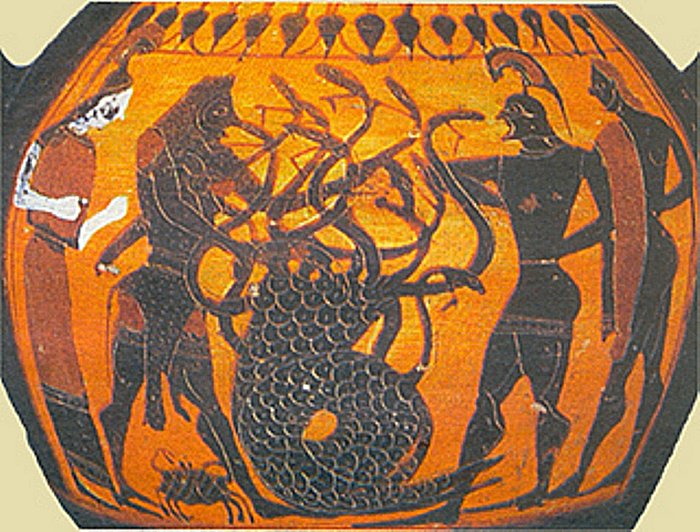
Amphora depicting Heracles cutting the heads of Lernean Hydra with the help of Iolaus. Dated to ca. 540 BCE. Credits: Melammu Project
Taylan Sevil, who worked as a museum director in İznik for 12 years, said the natural rock area of the Heracles relief had served as a quarry in ancient times and that the stones used on the city walls around İznik were brought from there.
“The relief is believed to have been made to protect quarry workers. In the relief, Heracles has his crook in his right hand and a seven-headed snake in his left hand. It is one of the artifacts that should be taken under protection,” he said.
Sevil also added said İznik was like an open-air museum that was under threat from treasure hunters. “If security forces watch this region from time to time, this may scare them off,” he said.
AncientPages.com
source: wikipedia

